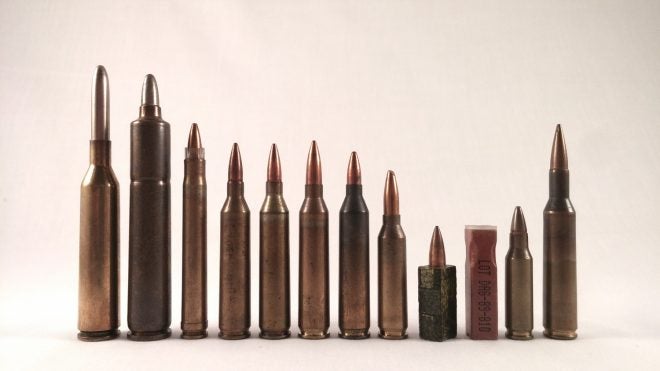Today I want to address something that has come up in small arms ammunition development several times in the past 150 years: The small caliber bullet problem. For the sake of this article, I’ll characterize this problem as a perceived trend recognized on several occasions of small caliber (below 0.277″/7mm) cartridges producing wounds that are ineffective at stopping or killing the enemy.
This trend has been noticed several times by multiple nations, including Japan in the early 1900s, Italy during the same period, Russia in the 1980s, and the United States between 1990 and 2010. What causes this, though? Is it really as simple as small calibers being just too small to effectively kill or stop a man?
Basic wounding education tells us that this is probably too simplistic. Wounds from small caliber rounds may be difficult to differentiate, and FMJ rounds rarely make clean, caliber-sized holes in their targets. Even considering only “through and through” wounds that produce no major wounding effect, there’s very little reason to believe that the wounds produced by calibers between 0.22″ and 0.28″ would be substantially different from those produced by calibers between 0.28″ and 0.32″. From this basis, we instead need to create other theories to explain this phenomenon. Here are two:
1. The phenomenon is psychological; users perceive that smaller rounds produce inferior terminal effects through selection bias. Essentially, every time a small caliber round fails to produce good terminal effects this is counted against it, and every time one produces good terminal effects it is forgotten, due to a preconceived bias that the round is too small to be effective. The converse may also be true for larger calibers in use by the same units.
2. The phenomenon is the result of human physiology. For the sake of argument, human tissue may have a certain fixed amount of “springback” that helps close a wound. If, for example, human tissue springs back from a wound by 0.100″ all around, that would mean that an 0.28″ diameter wound would have sixteen times the wound area after springback of an 0.22″ diameter wound, perhaps producing a rate of blood loss sixteen times higher.
Both theories are plausible given the facts as we know them, but more importantly, both are testable. However, to my knowledge, neither has been tested. It wouldn’t be so difficult to do so:
For 1.), conduct a double blind experiment where participants are shown ammunition of two different types, and then are tasked with shooting with both types a number of target that fall randomly, regardless of hit or caliber. Then afterwards question the participants as to how they felt each caliber performed in the test.
For 2.), conduct experiments on mammalian (e.g., pig) tissue where the tissue is shot under high speed footage with multiple full metal jacket projectiles, and then use the footage to determine whether any significant springback of tissue occurred, and if so, how much.
Why haven’t these tests been conducted? I do not know. It may be because the answer to the question of small caliber lethality has already been determined by those with the resources to conduct this research, or because this area of research is not a very high priority. Regardless, we of the public still do not know the exact reason for this phenomenon!
 Your Privacy Choices
Your Privacy Choices
